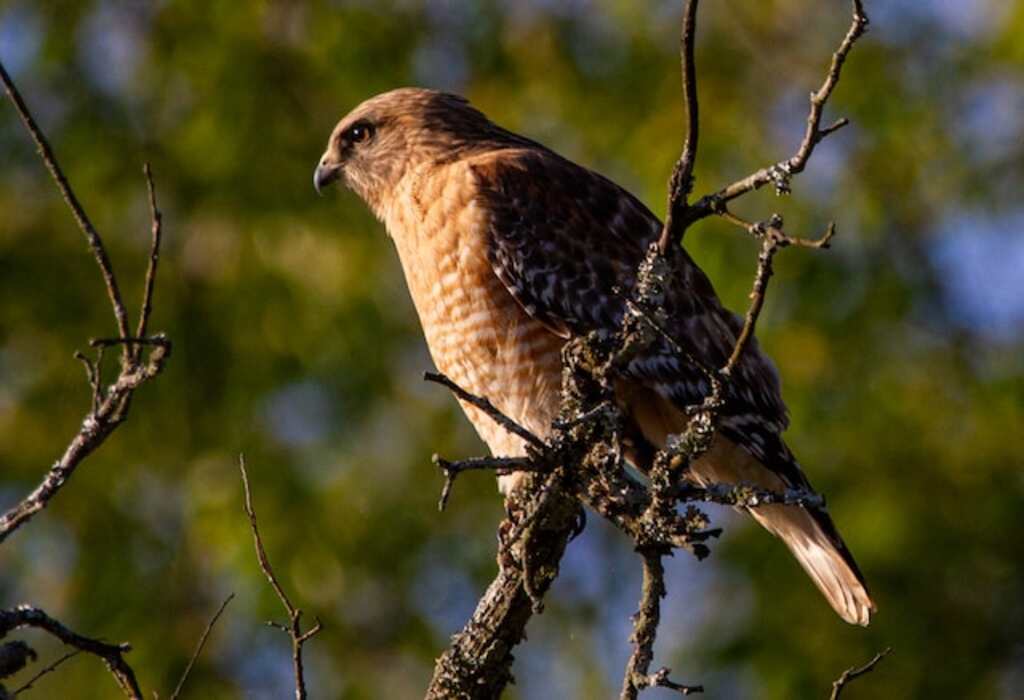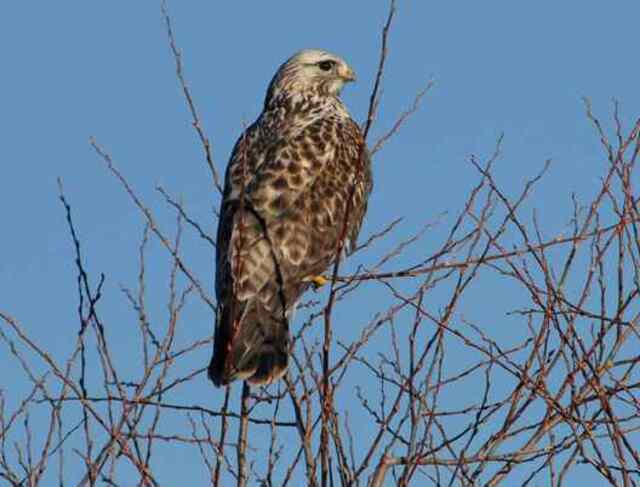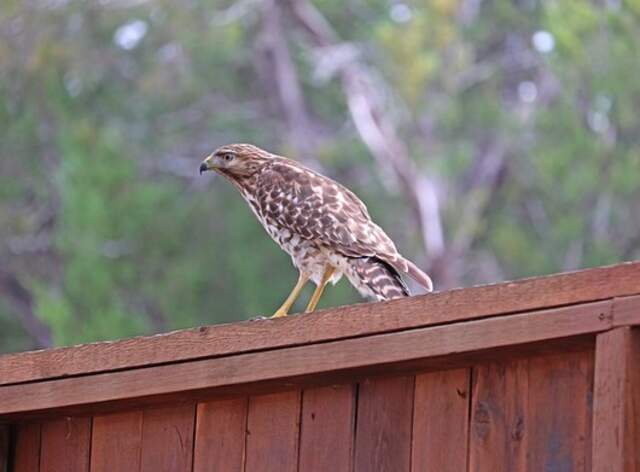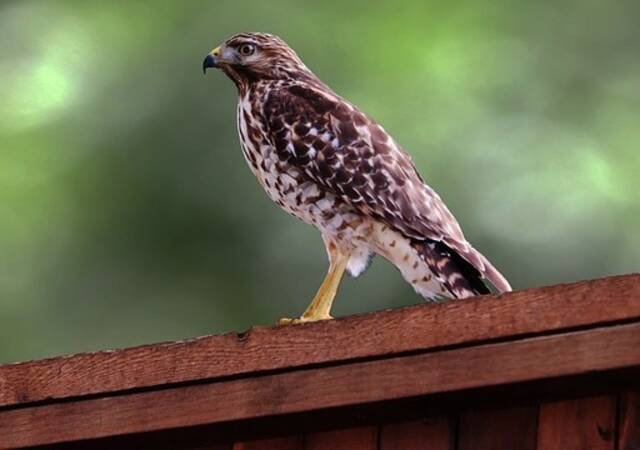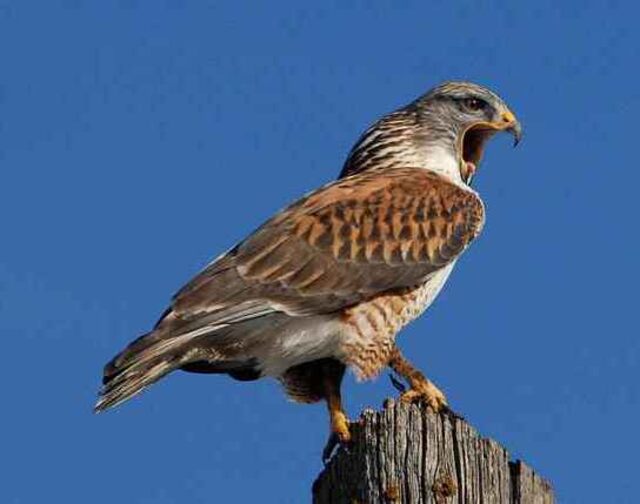Are hawks dangerous? Did you know that hawks are responsible for over 80% of bird deaths in the wild?
As one of nature’s most skilled hunters, hawks are known for their impressive speed, agility, and sharp talons. But with their predatory nature, it’s natural to wonder if hawks are dangerous to humans.
In this article, we’ll take a closer look at hawks and their behavior, debunk common misconceptions, and explore the different types of hawks and their level of danger.
We’ll also discuss how to stay safe around hawks and compare them to other birds of prey.
Ultimately, our goal is to provide you with a better understanding of these magnificent creatures and their role in the ecosystem, while also addressing any concerns about their potential danger.
Table of Contents
- 1 Overview of Hawks and Their Characteristics
- 2 Are Hawks Dangerous?
- 3 Understanding Hawk Behavior
- 4 Common Misconceptions About Hawks
- 5 How to Stay Safe Around Hawks
- 6 Types of Hawks and Their Level of Danger
- 7 Comparing Hawks to Other Birds of Prey
- 8 The Importance of Hawks in the Ecosystem
- 9 Conservation Efforts for Hawks
- 10 Frequently Asked Questions
- 11 Conclusion
- 12 Author
Overview of Hawks and Their Characteristics
Get to know the fascinating characteristics of these aerial hunters. Hawks, as skilled hunters, possess sharp talons and exceptional eyesight. These birds of prey are known for their prowess in capturing prey.
Hawks are versatile birds that inhabit diverse environments, such as forests, grasslands, and urban areas. They have adapted to thrive in different habitats and can be observed in these varied landscapes.
Their hunting techniques vary depending on the species and the type of prey they are targeting.
Some hawks hunt by soaring high in the sky and diving to catch their prey, while others hunt by flying low to the ground and chasing their prey.
Understanding hawk behavior is crucial to determine whether they are dangerous.
Are Hawks Dangerous?
Hawks can be dangerous to smaller animals they prey upon, such as rodents and small birds. However, they generally pose little threat to humans.
While rare instances of hawks attacking people or pets exist, they are usually defensive behaviors. It’s advisable to maintain a safe distance and avoid disturbing hawks to minimize any potential risk.
Understanding Hawk Behavior
Understanding hawk behavior can be fascinating as it reveals their unique hunting strategies and mannerisms.
Hawks are known for their incredible vision and hunting skills, which allow them to target prey from great distances and heights.
They also have a keen awareness of their surroundings and use their sharp talons to grasp and kill their prey quickly.
Additionally, hawk communication patterns are noteworthy, as they use a distinctive set of calls to communicate with other hawks.
By understanding hawk hunting behaviors and communication patterns, you can gain a deeper appreciation for these majestic birds of prey.
Now, let’s explore some common misconceptions about hawks.
Common Misconceptions About Hawks
Don’t let your misconceptions cloud your view of these magnificent creatures – there’s so much more to learn about the behavior of these awe-inspiring predators.
Common myths about hawks often portray them as aggressive and dangerous birds, but the reality is quite different.
Hawks are actually very shy and avoid human contact whenever possible. They are also highly territorial and will only attack if they feel their nest or young are being threatened.
To help dispel these myths, take a look at the following table:
| Myth | Reality | Explanation |
|---|---|---|
| Hawks attack humans | False | Hawks are not interested in humans and will only attack if they feel threatened |
| Hawks are always aggressive | False | Hawks are shy and avoid contact with humans |
| Hawks are dangerous pets | True | Hawks are wild animals and should never be kept as pets |
| Hawks are a nuisance | False | Hawks play an important role in the ecosystem and help control rodent populations |
As you can see, many common misconceptions about hawks are simply not true. Understanding hawk behavior can help you appreciate these amazing birds and stay safe around them.
Speaking of safety, it’s important to know how to stay safe around hawks, which we will discuss in the next section.
How to Stay Safe Around Hawks
If you’re concerned about staying safe around hawks, there are a few key points to keep in mind.
First and foremost, it’s important to avoid nesting areas, as hawks can be protective of their young and may view humans as a threat.
Additionally, make sure to keep small pets secure, either indoors or on a leash, to prevent them from becoming prey.
Finally, if you’re spending time outdoors in areas where hawks are common, be sure to take precautions to protect yourself, such as wearing protective gear and staying alert to your surroundings.
By taking these steps, you can minimize the risks of encountering hawks and ensure your safety in outdoor settings.
Avoiding Nesting Areas
Steering clear of areas where hawks may be nesting can help to reduce the chances of any unwanted encounters.
Hawks are known to have specific nesting habits, and human impact on habitats can disrupt their natural living environment.
Additionally, it’s important to be aware of hawk migration patterns and avoid human interference.
To avoid nesting areas, follow these steps:
1) Know the common nesting areas for hawks, such as tall trees or cliffs.
2) If you suspect hawks are nesting in your area, avoid disturbing them or their habitat.
3) Keep a safe distance from any nesting areas to avoid any potential attacks.
By avoiding nesting areas, you can decrease the likelihood of encountering a hawk and keep yourself and your pets safe. Speaking of pets, it’s important to keep them secure around hawks, which we’ll discuss in the next section.
Keeping Small Pets Secure
It’s essential to keep your furry companions safe around these powerful predators, so let’s talk about how to keep your small pets secure.
Pet safety should always be a priority when living in areas where hawks are present. These birds of prey have been known to swoop down and snatch up small dogs, cats, rabbits, and other animals.
One way to keep your pets secure is to keep them indoors or in a secure outdoor enclosure when you’re not around to supervise them.
Another way is to always keep them on a leash when outside. Additionally, you can install hawk deterrents, such as reflective tape, fake owls, or even motion-activated sprinklers to scare off hawks.
Here is a table that outlines some additional tips for keeping your small pets safe from hawks:
| Tips for Keeping Small Pets Safe from Hawks |
|---|
| Keep pets indoors or in secure enclosures |
| Always supervise pets when outside |
| Use a leash when walking pets |
| Install hawk deterrents |
By following these tips, you can help ensure the safety of your beloved pets. Now, let’s move on to discussing how to protect yourself in outdoor settings without attracting unwanted attention from hawks.
Protecting Yourself in Outdoor Settings
When you’re spending time outdoors, it’s important to take outdoor precautions and be aware of potential wildlife encounters.
Hawks, for example, are a common sight in many outdoor settings and can pose a threat to small pets and even humans.
To protect yourself, it’s important to avoid areas where hawks are known to nest and hunt, and to keep small pets on a leash or in a secure enclosure.
Additionally, it’s important to stay alert and aware of your surroundings when in areas where hawks are known to be present.
In the next section, we’ll discuss the different types of hawks and their level of danger, so you can better understand how to protect yourself and your pets when spending time outdoors.
Types of Hawks and Their Level of Danger
The level of risk posed by different types of hawks varies greatly, with some being more formidable than others.
For example, the Harris’s hawk is known for its cooperative hunting behavior and can be trained to hunt with humans, making it less of a threat.
However, the red-tailed hawk is larger and more aggressive, with sharp talons and a powerful beak that can cause serious injury.
It’s important to note that hawks generally don’t pose a significant danger to humans unless provoked or defending their nests.
When spending time in areas where hawks are common, such as open fields or wooded areas, it’s important to be aware of their habitats and avoid disturbing them.
Comparing hawks to other birds of prey, such as eagles and owls, can also provide a better understanding of the level of danger they pose in outdoor settings.
Comparing Hawks to Other Birds of Prey
You’ll be surprised by how much you can learn about hawks by comparing them to other birds of prey, like the majestic eagle or the wise old owl.
Hawks are skilled hunters and have impressive speed and agility, but eagles are larger and more powerful, able to take down prey that hawks cannot.
Owls, on the other hand, have unique hunting techniques, such as silently swooping down on their prey from above.
Hawks are also known for their distinctive behavioral patterns, such as their use of soaring and hovering to locate prey.
Comparing hawks to other birds of prey can help us appreciate the unique characteristics and abilities of each species.
Understanding these differences is important in maintaining the delicate balance of the ecosystem.
Speaking of which, hawks play a crucial role in the ecosystem, and their presence helps to control rodent populations that can cause damage to crops and other vegetation.
The Importance of Hawks in the Ecosystem
Now that you’ve learned about the different types of birds of prey, it’s important to understand the role that hawks play in the ecosystem.
Hawks are considered to be apex predators, meaning they sit at the top of the food chain and help to regulate the populations of other animals in their environment.
They feed on smaller prey, such as rodents and insects, which helps to control their populations and prevent overgrazing or other negative impacts on the environment.
Additionally, hawks provide benefits to humans by helping to control pest populations and promoting a healthier ecosystem.
However, there are also threats to hawk populations, including habitat loss and degradation, hunting, and pesticide use.
It’s important to recognize the importance of hawks in the ecosystem and take steps to protect their populations through conservation efforts.
In the next section, we’ll explore some of these efforts and how you can get involved in supporting hawk conservation.
Conservation Efforts for Hawks
You can make a difference in protecting these majestic creatures by supporting conservation efforts aimed at preserving their habitats and promoting sustainable practices.
The hawk population has been declining due to habitat loss, hunting, and other human activities.
To combat this, hunting regulations have been put in place to protect hawks from being hunted for sport or food.
Additionally, conservation efforts such as land preservation, habitat restoration, and education programs have been established to help maintain healthy hawk populations.
By supporting these efforts, you can help ensure that hawks continue to play their important role in the ecosystem and maintain their freedom to soar the skies.
Frequently Asked Questions
Can hawks be trained as pets?
Looking to train a hawk as a pet? While it’s technically possible, there are some limitations you’ll need to be aware of.
First, it’s important to note that not all hawks can be trained – only certain species are suitable for domestication. Additionally, there are legal ownership restrictions in place that vary depending on your location.
Even if you’re able to legally own a hawk, training one can be a difficult and time-consuming process. Hawks are wild animals at heart, and it’s important to respect their natural instincts and limitations.
Overall, while it may be tempting to have a hawk as a pet, it’s important to carefully consider the training limitations and legal ownership restrictions before embarking on this journey.
How long do hawks usually live in the wild?
Hawks are fascinating creatures that have captured the imagination of humans for centuries. They are known for their impressive hunting skills and majestic appearance, but have you ever wondered how long they typically live in the wild?
The average lifespan of a hawk varies depending on the species, but generally ranges from 10 to 15 years. Hawks have a unique breeding habit where they mate for life and often return to the same nest year after year.
While their lifespan may seem short, hawks are able to live freely and fully in their natural habitat, soaring through the skies and hunting their prey with precision.
Their lives may be short, but they embody the spirit of freedom and independence that we all crave.
Do hawks migrate to other parts of the world?
Imagine a group of travelers embarking on a journey through the vast expanse of the world. These travelers, like hawks, follow a specific path dictated by bird migration patterns.
Environmental factors such as temperature, food availability, and daylight hours play a significant role in their journey.
Hawks, like these travelers, also migrate to other parts of the world in search of better conditions. They are known to travel hundreds or even thousands of miles to reach their destination.
While hawks may be dangerous to some small prey, their migration is a fascinating spectacle of endurance and survival in the face of environmental challenges.
Are there any species of hawks that are endangered?
If you’re interested in hawk conservation, it’s important to know that several species are currently endangered due to human impact.
Organizations are working to protect habitats and reduce threats like habitat loss, pesticides, and hunting.
Some of the most threatened species include the Philippine hawk-eagle, Madagascar fish eagle, and African crowned eagle.
By supporting conservation efforts and advocating for responsible resource use, we can help protect these magnificent birds and ensure their survival for generations to come.
Can hawks attack humans unprovoked?
Hawks are known for their keen eyesight and impressive hunting skills, but can they attack humans unprovoked? It’s important to understand hawk behavior in order to answer this question.
While hawks are not typically a threat to humans, they can become aggressive if they feel threatened or are defending their nests.
In rare cases, hawks have been known to attack humans who venture too close to their nesting sites or who appear to be a threat.
However, these instances are rare and can usually be avoided by giving hawks a wide berth and respecting their territory.
It’s important to remember that hawks are a vital part of the ecosystem and play an important role in controlling rodent populations.
By understanding hawk behavior and taking simple precautions, humans can coexist safely with these magnificent birds.
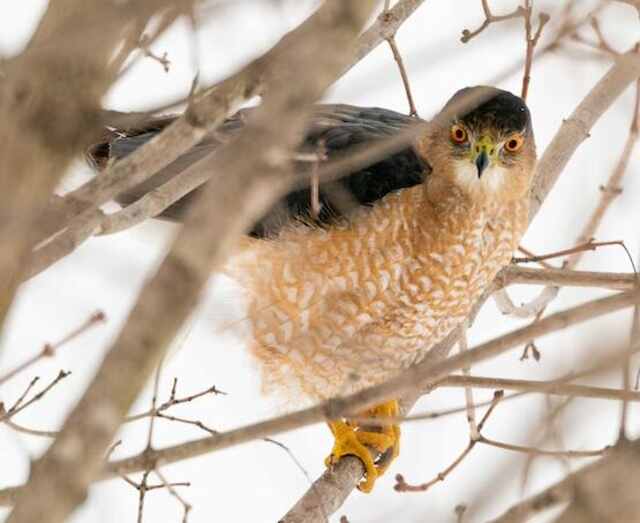
Conclusion
Congratulations! You’ve reached the end of the article and now have a better understanding of hawks and their behavior. As you’ve learned, hawks aren’t typically dangerous to humans and play an important role in the ecosystem.
While it’s important to be cautious around any wild animal, there’s no need to fear hawks.
By understanding their behavior and respecting their space, you can safely observe these magnificent birds in their natural habitat.
Remember, hawks are an important part of our natural world and should be appreciated and protected. As the saying goes, “the early bird gets the worm,” but in this case, the early hawk catches the prey.
So next time you see a hawk soaring through the sky, take a moment to appreciate its beauty and the important role it plays in our ecosystem.

